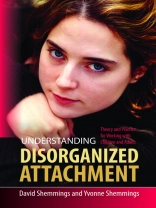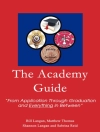Disorganized attachment, the most extreme form of insecure attachment, can develop in a child when the person who is normally meant to protect them is a source of danger. This usually leads to ’fear without solution’ and the effects can be lasting and damaging.
This book is a comprehensive and accessible text on disorganized attachment. It outlines what it is, how it can be identified and the key causes, including neurological, biochemical and genetic explanations. Factors that contribute to disorganized attachment are covered including unresolved loss and trauma, and the behaviour of caregivers. The authors also discuss evidence-based interventions to help families and carers as well as how to work with adults to prevent or minimize its occurrence. To root the theory in practice and to illustrate real-life examples of disorganized attachment case vignettes are included.
With an authoritative research base, this accessible text will be invaluable to practitioners and academics in the fields of social care, psychology, counselling and allied health professions as well as undergraduate and postgraduate students.
Innehållsförteckning
Acknowledgements. Dedication. Introduction. Part 1. Theoretical and Research Background. 1. What is Disorganized Attachment? 2. Key Pathways to Disorganized Attachment and its Consequences. 3. Identification and Assessment of Disorganized Attachment. 4. Neurological, Biochemical and Genetic Explanations. Part 2. Intervening Factors Leading to Disorganized Attachment. 5. Unresolved Loss and Trauma. 6. Mentalization and Reflective Function. 7. Specific Caregiver Behaviour (with David Wilkins). Part 3. Theory and Research into Practice. 8. What Produces Successful Interventions? (with David Phillips). 9. The Assessment of Disorganized Attachment and Maltreatment (ADAM) Project (with Tania Young). Concluding Comments. References. Subject Index. Author Index.
Om författaren
Yvonne Shemmings is a Continuing Professional Development Specialist and has trained professionals in over 30 child protection organizations. She is a qualified social worker and a senior manager, and her work includes the use of attachment theory in practice. Both David and Yvonne have published widely in the fields of child and adult attachment and child protection.












